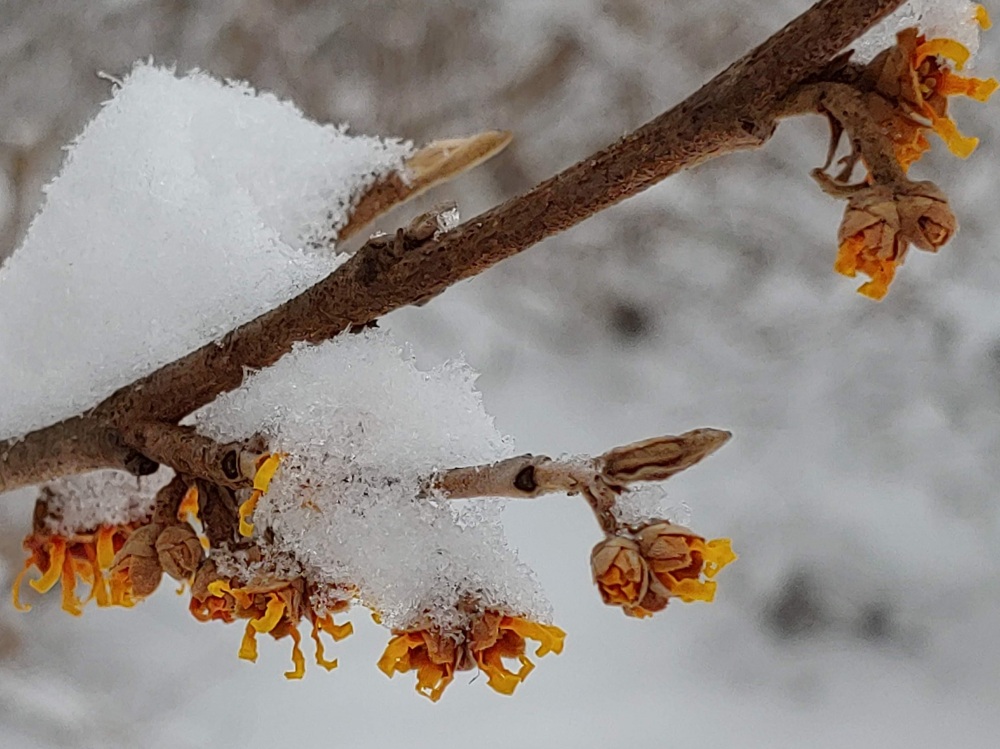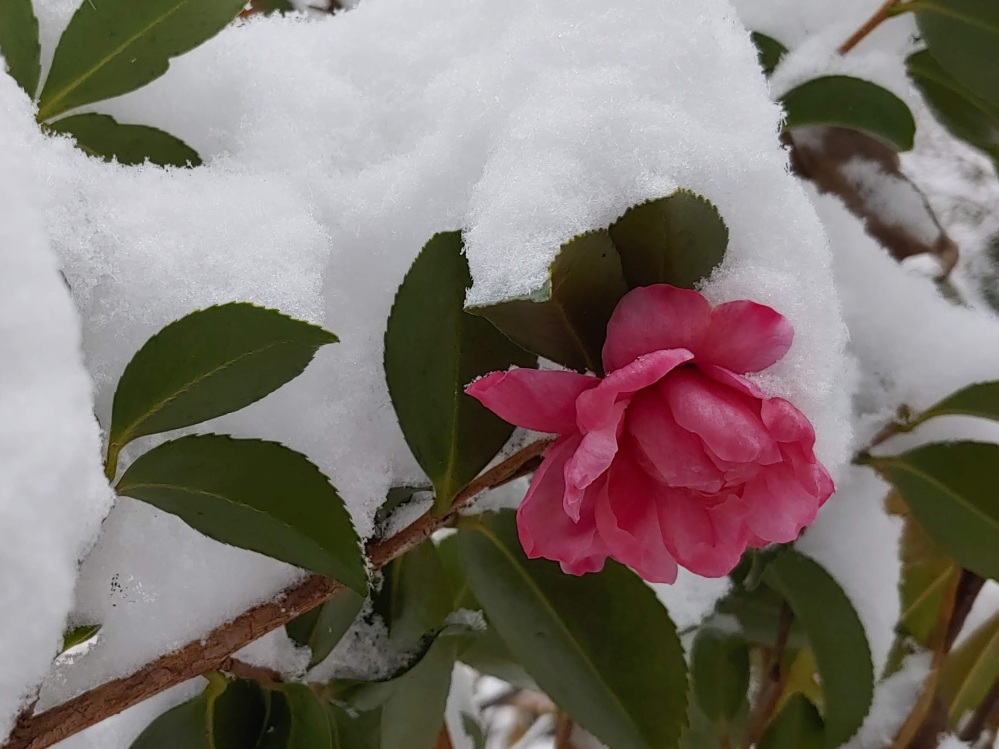I suspect that few gardeners are out today, stomping through ten inches of snow, except to rescue arching branches of evergreens from permanent disfigurement. Today is not ideal for surveying flowers in the garden, though the sun pokes through occasionally and the day feels warmer than the thirty-five degrees (Fahrenheit) that the thermometer indicates.

Blooms of hellebores are showing just a bit of color in this garden, but now they are buried under inches of wet snow that will further delay opening of flowers if melting lingers more than a few days. Quite uncommon a decade ago, hellebores have become a standard for winter flowers, even if many do not bloom until very late in the season.
 Shrubs stand above the deepest snowfalls in this area, and several are dependable for winter flowers. Until a few days ago, I was prepared for disappointment that flowering of the Vernal witch hazels (Hamamelis vernalis, above) was delayed, and concerned that saturated soils could have damaged flower buds that seemed small and stunted. But, here they are, flowering on a typical schedule that seems to vary only in the mildest winters when blooms are occasionally seen late in December.
Shrubs stand above the deepest snowfalls in this area, and several are dependable for winter flowers. Until a few days ago, I was prepared for disappointment that flowering of the Vernal witch hazels (Hamamelis vernalis, above) was delayed, and concerned that saturated soils could have damaged flower buds that seemed small and stunted. But, here they are, flowering on a typical schedule that seems to vary only in the mildest winters when blooms are occasionally seen late in December. 
Probably, flowers are more scattered than usual for mid-January, but then it is likely that flowering will extend longer into the winter. The earliest of hybrid witch hazels in the garden, ‘Arnold Promise’ (Hamamelis x intermedia ‘Arnold Promise’, above) began showing a sliver of yellow through plump buds a week ago, but it is doubtful that flowers will fully open until late in the month, and possibly not until mid-February. 
In every season there are oddities, unusually early or late blooms that sometimes mystify the gardener, and I am at a loss to explain the tardiness of typically autumn flowering mahonias (Mahonia x media ‘Winter Sun’, above). Flowers that usually open in November showed little color until early in the new year, and with colder temperatures forecast these are likely to persist for several weeks longer than is typical. 
Late autumn flowering camellias (above) continued to flower through recent weeks of mild temperatures, and though most blooms are ruined by twenty degree and colder nights, a few pink flowers persist. These, I expect, will not survive next week’s cold that will drop into the low teens.
You know, I am a Californian, and we are supposed to crave color throughout the year; but I don’t get it. Even as a Californian, I think that it is is okay for the garden to take a break through our minimal winter. I mean, it is winter . . . or it should be.
We need encouragement to get through the long winters. Mid-January flowers are a morale builder, but it is February blooms that give the greatest encouragement to make it through the last weeks of winter.
We don’t get enough winter. There is not enough time to get all the dormant pruning done.
But I get it. In gardens that do not get much water, we start missing flowers by the end of summer.
Speaking of camellias, have you ever grown a tea camellia (Camellia sinensis)? I have one here indoors that I’m nursing through the winter. Received the seedling too late to pot/tub up outside, but it seems to be doing okay so far indoors.
Just wondering if you’ve had any experience with them.
No, all the camellias in the garden are National Arboretum hybrids, with a few Camellia japonica. In the past, I’ve experienced survival problems with Sasanqua camellias, and typically lose flower buds of japonicas after a cold winter. I got tired of dying and under performing camellias so I turned to the sturdier Arboretum introductions.
Well, I plan to keep this one eventually tubbed, so it will be interesting to see how it does.